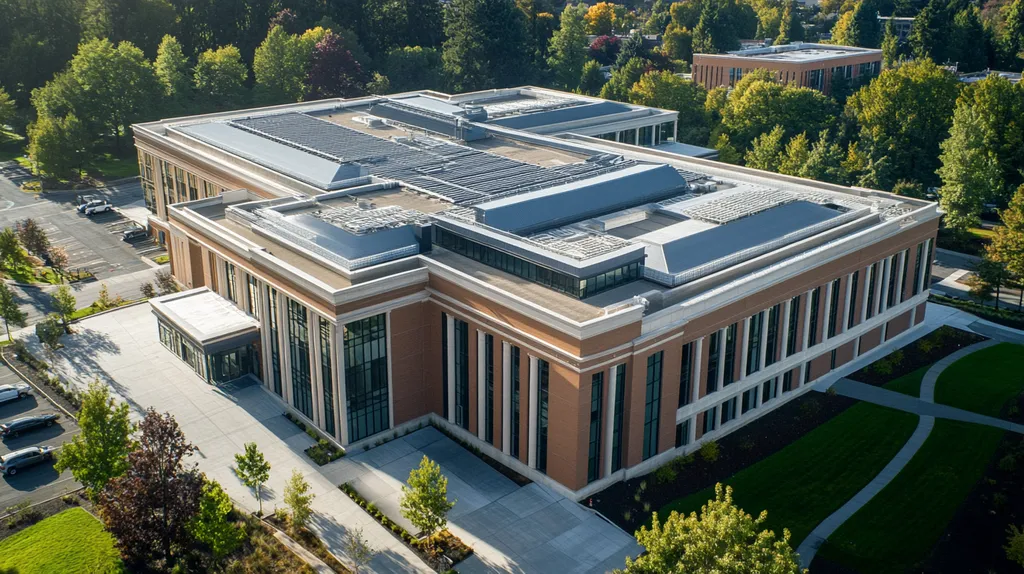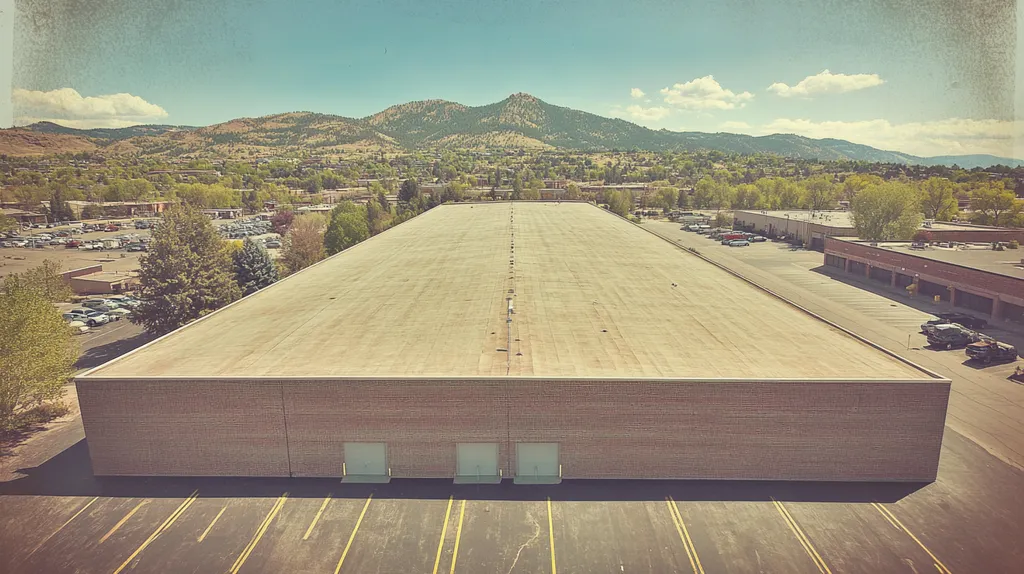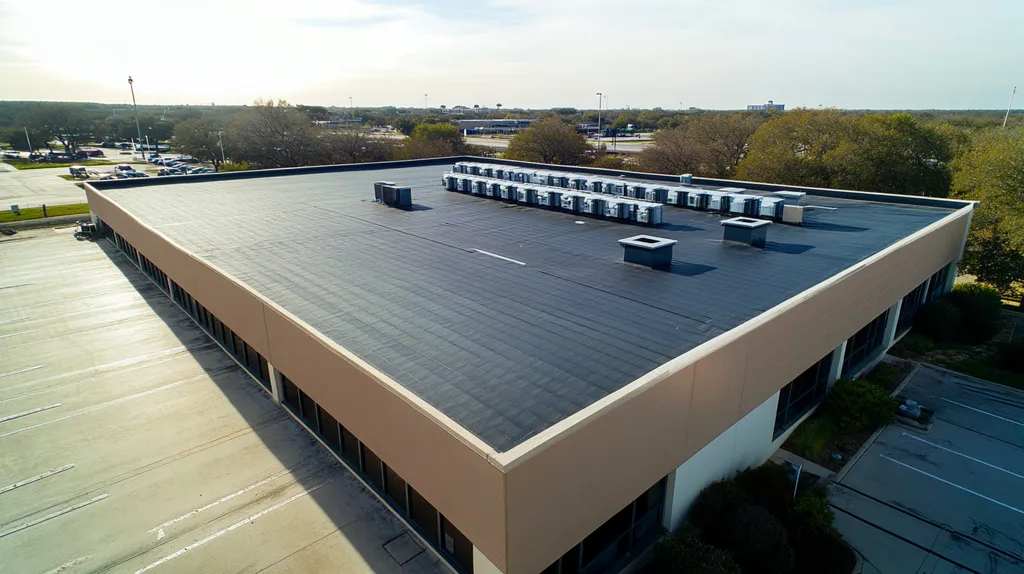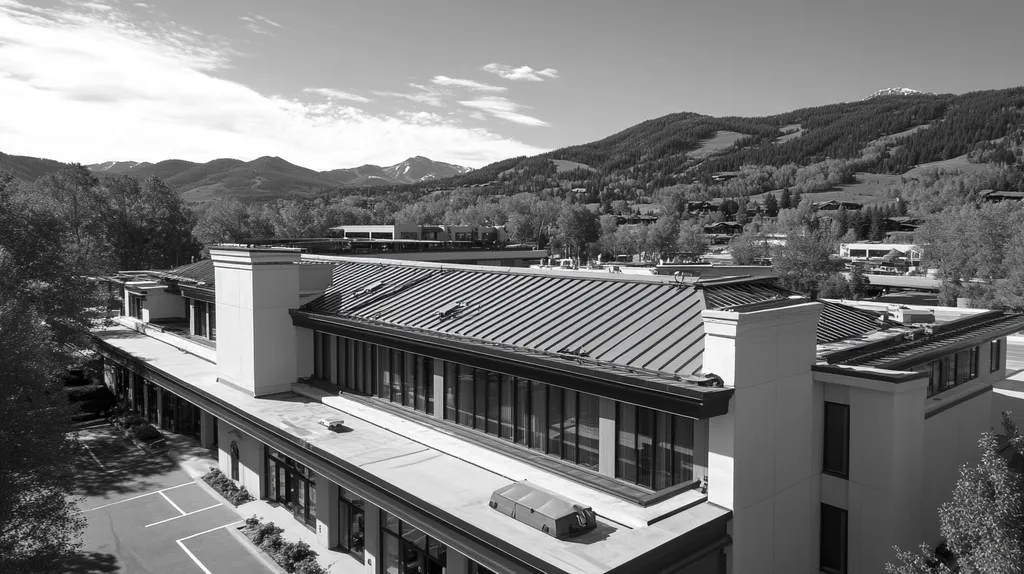In today’s challenging commercial property landscape, a single misstep with roof coatings can void warranties worth hundreds of thousands of dollars. Industry data shows that 40% of commercial roof warranties are compromised due to improper coating selections or applications.
For property professionals, understanding how coatings impact warranty coverage isn’t just about maintenance – it’s about protecting major capital investments. With coating decisions affecting everything from energy efficiency to structural integrity, the stakes couldn’t be higher.
This comprehensive guide examines critical factors in coating selection, application protocols, and warranty preservation, providing property managers with actionable solutions to maximize their roofing investments.
SECTION 1: PERFORMANCE FACTORS
Choosing the right roof coatings can make or break the durability and efficiency of a commercial roof. Poor-quality coatings can lead to early failures, translating to unexpected repair costs and operational headaches. Studies suggest that high-quality coatings can extend roof longevity by up to 30%. Property professionals must fully grasp how these coatings influence durability, weather resistance, and energy efficiency to protect their investments.
Impact on Roof Durability
Roof coatings are essential for boosting the strength and lifespan of commercial roofs. Without them, roofs are vulnerable to damage from foot traffic, harsh UV rays, and environmental wear. An effective coating creates a protective layer that shields the underlying materials from these threats.
Specific elastomeric coatings can notably prolong roof life by offering enhanced resistance to cracking and peeling. These coatings are designed to reflect UV rays, which helps minimize heat buildup that can degrade materials.
Moreover, roof coatings provide a seamless shield against leaks, effectively lowering the risks associated with water penetration. Regular maintenance and timely reapplication are crucial for preserving these protective qualities over time.
Key Action Items
Effect on Weather Resistance
Take silicone coatings, for instance; they are highly regarded for their water-resistant properties, making them ideal for areas that see consistent rain. Their smooth, non-porous surface helps water slide off, greatly reducing leak risks.
Additionally, quality roof coatings aid in managing thermal expansion and contraction. This is critical for preventing brittleness and material breakdown during fluctuating temperatures.
Key Action Items
Enhancement of Energy Efficiency
Energy efficiency is more important than ever for commercial properties, and roof coatings can provide a significant boost. Reflective coatings, for instance, reduce energy use by limiting the amount of heat absorbed by the roof.
Research shows that reflective roof coatings can lower surface temperatures by up to 60 degrees Fahrenheit, contributing to cooler indoor conditions. This can substantially decrease cooling costs, which is especially beneficial in warmer climates where air conditioning runs frequently.
These energy-efficient coatings also align with sustainability initiatives, reducing the environmental footprint of commercial buildings. Many property owners are pursuing LEED certification, and incorporating effective roof coatings is a key strategy to achieve that goal.
Key Action Items
SECTION 2: FINANCIAL CONSIDERATIONS
The financial implications of applying roof coatings can significantly impact a property’s long-term value. Given that commercial roofs represent a substantial investment, it’s essential to understand these costs. Research shows that facilities with well-kept roofs can avoid 50% of premature replacements. This section delves into application costs, potential warranty extensions, and return on investment (ROI), all of which are vital for effective budgeting and decision-making.
Cost of Application and Maintenance
The initial investment for roof coatings can feel overwhelming, but these costs often play a minor role in the total roofing budget. For example, a commercial roof restoration typically runs between $1 to $3 per square foot, much lower than a full roof replacement.
Additionally, roof coatings generally need less maintenance compared to traditional options. Regular inspections and minor fixes can yield huge savings over time, potentially extending the life of a coated roof by up to 20 years and minimizing costly repairs.
Property owners should also consider the potential for reduced energy expenses due to enhanced thermal performance. Reflective coatings can cut cooling costs by as much as 30%, making long-term financial benefits even more appealing.
Key Action Items
Potential for Extended Warranty
One of the most appealing financial aspects of roof coatings is the chance for extended warranties. Many manufacturers offer warranties that range from 10 to 50 years for coated roofs, including coverage for both materials and labor, which is crucial for effective financial planning.
Having an extended warranty can alleviate budget concerns regarding future repairs. A strong warranty minimizes unexpected costs and enhances the property’s overall asset value. Buildings with longer warranties are often seen as lower-risk investments.
Moreover, coatings may qualify for enhanced warranties if additional measures are taken, such as proper preparation of the roof surface. These extended warranties often include protection against leaks and deterioration, providing crucial security for property owners’ investments.
Key Action Items
Return on Investment Analysis
Assessing the return on investment (ROI) for roof coatings is key for informed financial decisions. Analyses often demonstrate that ROI can exceed 100%, thanks to reduced energy bills, prolonged roof lifespan, and lowered maintenance needs.
In many cases, property owners report returns of $2 to $3 for every dollar spent on roof coatings, reflecting energy savings and deferred maintenance costs. This enhancement can also boost property appeal, making it more attractive to potential tenants or buyers.
Furthermore, investing in roof coatings can strengthen sustainability credentials, appealing to eco-conscious businesses and consumers. This strategy increases occupancy rates and elevates property values.
Key Action Items
SECTION 3: COMPLIANCE REQUIREMENTS
For property owners and facility managers, keeping up with roofing compliance is absolutely vital. A roof coating that doesn’t meet standards can void warranties, leading to unexpected repair costs. Alarmingly, nearly 30% of roofing claims are denied due to compliance issues. This section explores essential compliance topics, including manufacturer approvals, building code requirements, and warranty conditions.
Manufacturer Approval and Compatibility
Choosing roof coatings that lack manufacturer approval can jeopardize warranty validity. Each roofing system comes with specific compatibility requirements for coatings. Ignoring these guidelines can result in severe issues, including leaks and structural failures.
For instance, applying a coating that the manufacturer does not endorse risks voiding the warranty. This oversight could mean footing the bill for costly repairs or even replacements, potentially amounting to tens of thousands of dollars.
It’s essential for property managers to consult manufacturer guidelines before selecting coatings. Ensuring coatings meet these specifications not only protects warranties but also enhances roof longevity.
Additionally, confirming that the contractor applying the coating is approved is crucial. Approved contractors are equipped to correctly install the coatings, ensuring compliance and safeguarding the roof’s investment.
Key Action Items
Compliance with Building Codes
Building codes are not merely red tape; they are essential for the safety and functionality of commercial roofs. These regulations dictate which materials can be used and the methods of installation. Ignoring them can lead to fines, mandates for alterations, or serious legal repercussions.
For example, a specific coating could fail to meet local fire safety standards, endangering the property and its occupants. Non-compliance can result in costly corrections or upgrades that could have easily been avoided.
Property owners should collaborate with knowledgeable contractors who understand local codes, ensuring that any selected roof coating adheres to these regulations. Staying informed about regular updates to codes is also crucial, as requirements can change within a year.
Key Action Items
Warranty Terms and Conditions
Grasping warranty terms is essential for property professionals who want to safeguard their investments. Warranty coverage and conditions can vary widely, often containing specific clauses related to roof coatings, which are critical when filing a claim.
Some warranties might stipulate required inspections and maintenance documentation. Inadequate record-keeping can easily void warranties, leaving unexpected costs unprotected.
Moreover, warranty durations can span from a few years to 30 or more. It’s important for property owners to consider the long-term implications of any warranty prior to selecting a roof coating.
Engaging professionals to clarify complex warranty terms can be invaluable. Understanding these conditions will lead to smarter roofing decisions that safeguard property integrity over time.
Key Action Items
SECTION 4: RISK MANAGEMENT
Risk management is critical to preserving the value and functionality of a commercial roof. Property owners and facility managers must remain vigilant against decisions that could void warranties and lead to costly repairs. For example, a 2017 report indicated that nearly 30% of warranty claims are denied due to installation non-compliance. By addressing warranty adherence, mitigating unauthorized modifications, and ensuring proper installation, significant risks associated with roof coatings can be effectively managed.
Avoiding Warranty Voidance
When it comes to roof coatings, following manufacturer warranty terms is non-negotiable. Many coatings have precise requirements regarding surface conditions and preparation to ensure that warranties remain valid. Disregarding these standards may lead to rejected warranty claims, leaving property owners on the hook for unexpected expenses.
For instance, a top manufacturer may require that their coatings only adhere to thoroughly cleaned surfaces. Neglecting to prep surfaces properly puts the roof at risk for failures, potentially resulting in high repair costs. Compliance with warranty guidelines isn’t just a best practice; it’s a crucial financial safeguard.
Meticulous documentation of every step in the coating application process is vital for successful future claims. Having clear records demonstrates adherence to proper protocols, while a lack of documentation can jeopardize claims when needed.
Key Action Items
Mitigating Damage from Unauthorized Modifications
Unauthorized modifications can introduce complications that threaten a roof’s integrity. Sometimes, property managers may make changes like adding rooftop equipment without consulting roofing professionals. This disconnect can undermine the coating’s effectiveness and overall roof health.
For example, installing heavy equipment might create unexpected pressure points on the roof. If these factors were not accounted for during coating application, it could result in premature wear and a shortened roof lifespan.
Establishing clear guidelines for any modifications is essential. Requiring that contractors seek approval for changes keeps everyone informed and ensures the roof maintenance plan remains intact. Regular inspections further enhance this proactive approach by identifying potential risks early.
Key Action Items
Ensuring Proper Installation
Proper installation is crucial to unlocking the full potential of a roof coating. Even the highest quality products can fail if applied incorrectly. In fact, poor installation is often cited as a primary culprit in warranty claim failures, with roughly 40% of roofing issues attributed to installation errors.
To mitigate these risks, it is vital to hire an experienced roofing contractor who specializes in roof coatings. Property managers should prioritize contractors with proven success in adhering to manufacturer specifications and installation best practices.
Investing in training and certification programs for contractors can enhance their capabilities. Working with skilled professionals significantly reduces the likelihood of installation failures that could jeopardize the roof’s performance and longevity.
Key Action Items
SECTION 5: OPERATIONAL PROCEDURES
In the commercial roofing world, adhering to effective operational procedures for roof coatings is crucial for ensuring warranty longevity and roof performance. A substantial number of early roof failures can be linked to improper application and lack of maintenance. For instance, studies show that nearly 30% of roofs encountered significant troubles during their warranty period due to insufficient coating applications. By focusing on thorough pre-application inspections, precise application methods, and diligent post-application maintenance, property owners can protect their valuable investments.
Pre-Application Inspections and Preparation
The foundation of a successful roof coating starts well before any product hits the surface. Comprehensive pre-application inspections are crucial for identifying existing issues that might compromise the coating’s performance. This process includes evaluating the roof substrate for damage, checking for moisture, and ensuring the surface is pristine and free of debris.
Facility managers should employ a detailed inspection checklist to assess the roofing condition. This checklist should cover essential factors like surface texture, signs of pooling water, and any prior repairs, as all of these elements can significantly influence the coating’s adhesion and longevity.
It’s also essential to address any existing leaks prior to application. Even minor defects that go unnoticed can escalate into severe problems, such as warranty disputes. Ensuring the surface preparation and necessary repairs are complete protects against these complications and sets the stage for a durable coating application.
Key Action Items
Application and Installation Best Practices
The application of roof coatings demands precision for optimal performance. Following the manufacturer’s guidelines during installation is critical, as specific requirements may vary regarding temperature, humidity, and application methods. Deviating from these stipulations could lead to weakened performance and potential warranty voiding.
For uniform coverage, facility managers should explore advanced application techniques such as spraying, rolling, or brushing, based on the type of roof. Inconsistent application can result in weak spots, not only diminishing the coating’s lifespan but also jeopardizing warranty integrity.
Hiring qualified and certified contractors ensures a higher standard of work. Their expertise allows them to recognize subtle issues that untrained eyes might miss. Investing in skilled labor will likely prevent future complications and uphold the warranty coverage.
Key Action Items
Post-Application Maintenance and Monitoring
After applying roof coatings, proactive maintenance is essential for sustaining long-term performance. Routine inspections should be scheduled to identify signs of wear, such as cracks, peeling, or discoloration. These indicators can signal potential coating failure, which could compromise the warranty.
Implementing a comprehensive maintenance plan helps catch issues early, potentially saving money compared to waiting for significant damage. This approach aligns with many manufacturers’ warranty requirements, which often stipulate regular maintenance and inspections.
Moreover, detailed documentation of inspections and maintenance actions is crucial as it can provide vital evidence if a warranty claim arises. Maintaining accurate logs can significantly improve the chances of honoring any warranty claims. Also, educating facility staff on monitoring roof conditions can lead to quicker responses to emerging problems.
Key Action Items
SECTION 5: OPERATIONAL PROCEDURES
In the competitive landscape of commercial roofing, establishing effective operational procedures for roof coatings is vital to maximizing warranty benefits. Failure to follow proper application and maintenance protocols leads to a staggering number of premature roof failures. Studies reveal that nearly 30% of roofs face significant issues within their warranty period due to improper coating applications. By prioritizing key areas such as pre-application inspections, best practices during installation, and diligent post-application oversight, property owners can better protect their investments.
Pre-Application Inspections and Preparation
Getting a roof coating right starts long before the first coat goes on. Thorough pre-application inspections are essential to identify potential issues that could hinder coating performance. This involves evaluating the roof substrate for damage, checking for moisture levels, and ensuring the surface is clean and free from debris.
Facility managers should use a detailed inspection checklist to assess the roof’s condition. Key aspects to evaluate include surface texture, signs of pooling water, and any prior repairs, all of which can affect adhesion and the coating’s longevity.
Furthermore, any leaks must be repaired prior to application. Neglecting even minor defects can escalate into significant issues, including warranty complications. Careful preparation lays the groundwork for a successful coating application and ensures robust warranty protection.
Key Action Items
Application and Installation Best Practices
Application of roof coatings requires precision to ensure optimal performance. Following manufacturer guidelines throughout installation is non-negotiable, as each product has specific requirements regarding temperature, humidity, and application methods.
For even coverage, facility managers should consider advanced application techniques like spraying, rolling, or brushing, based on the roof type. Inconsistent application can create weak spots, which could shorten the coating’s lifespan and jeopardize warranty validity.
Utilizing qualified and certified contractors is essential. Their expertise helps identify subtle issues that may be overlooked by others. Investing in skilled labor is likely to reduce future complications and uphold warranty claims.
Key Action Items
Post-Application Maintenance and Monitoring
After completing the coating application, proactive maintenance is crucial to ensure long-lasting performance. Routine inspections should be planned to check for signs of wear such as cracking, peeling, or discoloration. These indications can reveal that the coating may be failing, potentially threatening warranty coverage.
Implementing a structured maintenance plan allows property managers to catch issues early, often at a lower cost than waiting for significant damage. This proactive strategy aligns closely with most manufacturers’ warranty requirements, which typically call for regular inspections and upkeep.
Moreover, documenting all inspections and maintenance actions is essential; it serves as vital evidence in case a warranty claim arises. Detailed logs of these activities can significantly increase the chances of a successful warranty claim. Educating facility staff about monitoring roof conditions enhances responsiveness to emerging problems and promotes a culture of accountability that safeguards the roofing investment.
Key Action Items
The Bottom Line
With 40% of commercial roof warranties being compromised due to improper coating decisions, the stakes for property professionals couldn’t be higher.
Successful roof coating management requires a calculated approach spanning performance evaluation, financial planning, and rigorous compliance oversight.
The data shows that properties implementing comprehensive coating strategies see up to 30% lower maintenance costs and 20+ years of extended roof life.
By following manufacturer specifications, maintaining proper documentation, and leveraging qualified contractors, facility managers can protect their warranty coverage while maximizing their roofing investment.
The future of commercial roofing lies in proactive coating management – those who adapt these practices now will see substantial returns in reduced costs and enhanced property value for years to come.
FREQUENTLY ASKED QUESTIONS
Q. How do roof coatings affect the durability of a commercial roof?
A. Roof coatings create a barrier against damage from UV rays and foot traffic, significantly extending a roof’s lifespan. They protect underlying materials from environmental wear, reducing repair costs over time. Quality coatings can enhance durability by preventing leaks, ensuring your roof remains a reliable shield against the elements.
Q. What financial benefits do industrial roofs gain from coatings?
A. Roof coatings require a lower initial investment compared to total replacements and often extend the roof’s life significantly. They also help save on energy costs through better thermal performance, leading to reduced long-term operational expenses. By boosting property value, these coatings make for a financially savvy decision.
Q. Why is compliance crucial for commercial roof coatings?
A. Compliance ensures that coatings are applied in accordance with local regulations, potentially saving property owners from costly legal repercussions. It guarantees that warranties remain valid, protecting your investment from unexpected repair expenses. Being compliant helps maintain the roof’s integrity and functionality, ensuring long-lasting performance.
Q. How can I avoid warranty voidance on my commercial roof?
A. To avoid warranty issues, always follow manufacturer guidelines for coating applications, including surface preparation. It’s essential to keep thorough documentation of all processes and inspections to substantiate warranty claims. Regularly verify that any modifications made to the roof adhere to approved practices, ensuring ongoing warranty validity.
Q. What best practices ensure proper application of roof coatings?
A. Following manufacturer’s instructions during application is vital to ensure the coating properly adheres and functions effectively. Use trained contractors experienced with roofing materials. Maintain consistent communication throughout the application process and conduct inspections to identify any irregularities that need addressing immediately for optimal results.
Q. How should I maintain my roof after applying coatings?
A. Establish a regular maintenance schedule, including routine inspections to identify early signs of wear or damage. Document your findings for warranty purposes and respond quickly to any issues. Implementing this proactive strategy not only ensures compliance with warranty terms but also prolongs the effectiveness of the roof coatings.
Q. What should I consider when selecting coatings for industrial roofs?
A. Evaluate the specific environmental conditions your roof faces, such as moisture levels and temperature fluctuations. Choose coatings that enhance energy efficiency, provide excellent weather resistance, and meet compliance standards. It’s also beneficial to select options with strong warranties to safeguard your investment and prolong the roof’s life.











